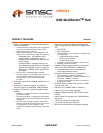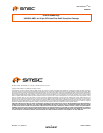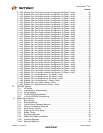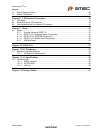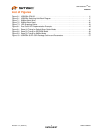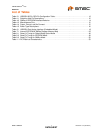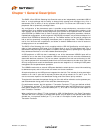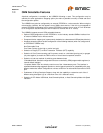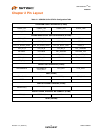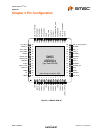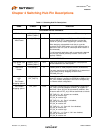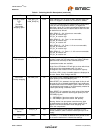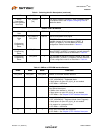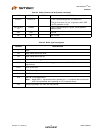
USB MultiSwitch
TM
Hub
Datasheet
Revision 1.91 (08-22-07) 8 SMSC USB2524
DATASHEET
Chapter 1 General Description
The SMSC 4-Port USB 2.0 Switching Hub Controller acts as two independently controllable USB 2.0
Hubs in a single package with the ability to electronically reassign and reconfigure any of its 4
downstream ports to either of its two upstream USB ports. This allows two USB hosts to share
peripherals and to dynamically reconfigure them.
Any configuration of the downstream ports is possible except simultaneous connection to both
upstream ports. Up to 8 different configurations can be selected by a dedicated 3-pin interface, or the
4-pin interface can be used to directly assign each port to either of the upstream hosts. An external
serial EEPROM (or SMBus Host) is used to store the 8 different configuration parameters. However,
8 predefined configurations, as well as generic VID/PID/DID information, are provided as defaults if no
external Serial EEPROM is detected at power up. The SMBus interface can be used to configure the
hub as well as dynamically re-assigning downstream ports to upstream hosts. The SMBus interface
can be “live” while the hub is operational, and allows an external SMBus host to have full access to
re-assign ports on an as-needed basis.
The SMSC 4-Port Switching Hub is fully compliant with the USB 2.0 Specification and will attach to
either or both upstream USB hosts as a Full-Speed Hub or as a Full-/High-Speed Hub. The 4
downstream Hub ports support Low-Speed, Full-Speed, and High-Speed (if operating as a High-Speed
Hub) downstream devices on all of the enabled downstream ports.
A USB peripheral or USB Hub that is attached to one of the downstream USB2524 ports will be
available to one or the other of the upstream USB host controllers, but can never be simultaneously
shared with both host controllers. The user can switch a peripheral from one host to the other (on-the-
fly), and the peripheral will automatically detach from one host and attach to the other host. Each host
will only configure and control the downstream ports that are assigned to it, including full USB power
management and suspend/resume operations.
The USB2524 works with an external USB power distribution switch device to control V
BUS
switching
to downstream ports, and to limit current and sense over-current conditions.
All required resistors on the USB ports are integrated into the Hub. This includes all series termination
resistors on D+ and D– pins and all required pull-down and pull-up resistors on D+ and D– pins. The
over-current sense inputs for the downstream facing ports have internal pull-up resistors.
Throughout this document the upstream facing port of the hub will be referred to as the upstream port,
and the downstream facing ports will be called the downstream ports.
For performance reasons, the Hub provides 1 Transaction Translator (TT) per port (defined as Multi-
TT configuration), and each TT has 1512 bytes of periodic buffer space and 272 Bytes of non- periodic
buffer space (divided into 4 non-periodic buffers per TT), for a total of 1784 bytes of buffer space for
each Transaction Translator.
When configured as a Single-TT Hub (required by USB 2.0 Specification), the Single Transaction
Translator will have 1512 bytes of periodic buffer space and 272 bytes of non-periodic buffer space
(divided into 4 non-periodic buffers per TT), for a total of 1784 bytes of buffer space for the entire
Transaction Translator.



